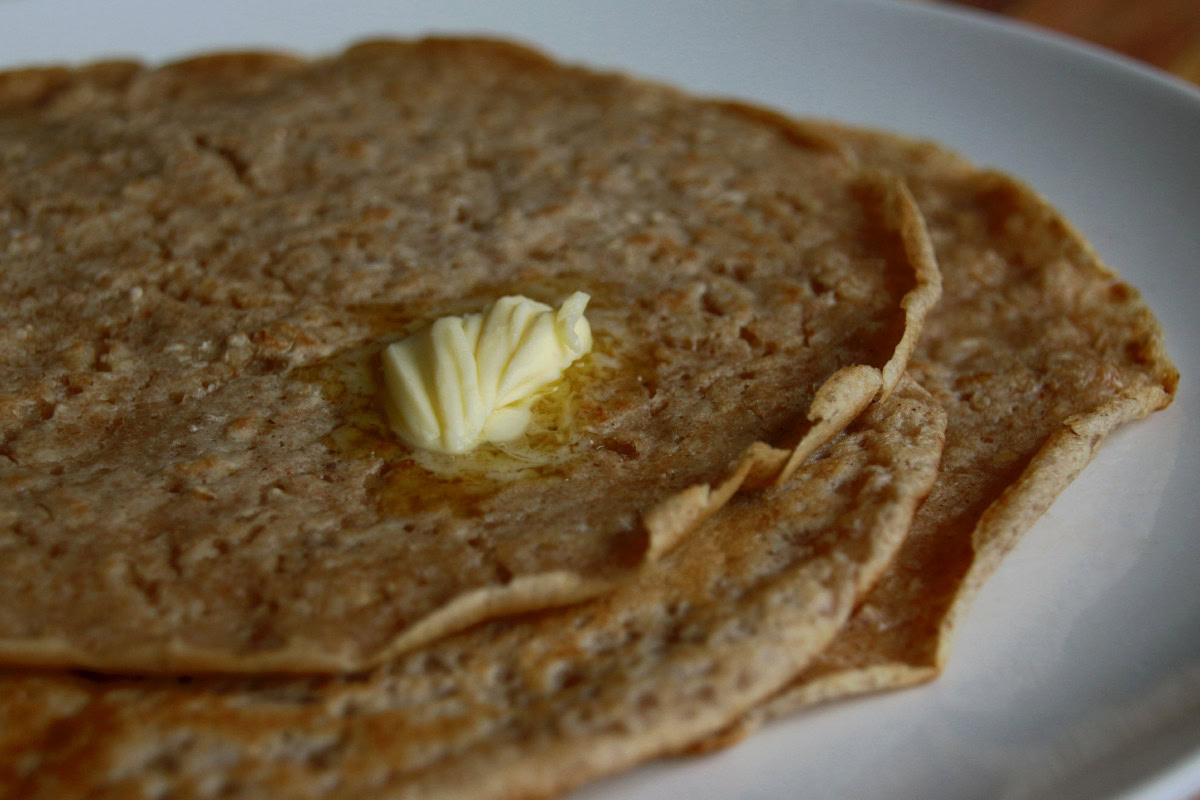Published on 13th February 2020
Credit:
Taken from Slow Dough: Real Bread © Chris Young, published by Nourish Books. Hardback, £20. Photo by Chris Young / realbreadcampaign.org CC-BY-SA 4.0
Chris says: “The oatcakes of Staffordshire, Derbyshire and Cheshire are soft and almost like crêpes. When I was young they rarely strayed to south Staffordshire where my family live, but my dad’s job used to take him to their native territory and he’d buy some.
“Now that I live in London, my parents still bring oatcakes to stock up my freezer when they visit. Here’s my recipe, which uses yeast rather than the baking powder typically used by commercial producers.”
Ingredients:
- 150 g / 5½ oz rolled oats or pinhead oatmeal
- 50 g / 1¾ oz wholemeal / whole wheat flour
- 2 g / ½ tsp fresh yeast*
- 300-350 g / 10½-12 oz milk, water or mixture of the two
- 2 g / ½ tsp fine/table salt
- A little butter or oil, for greasing
*Here’s an alternative recipe using a sourdough starter
Method:
- If using rolled oats, put them into a food processor or upright blender and pulse them until they take on a finer consistency.
- Mix all of the ingredients together in a bowl, cover and leave in the refrigerator overnight. Ideally, take the batter out again 1 hour before you need it: you can get away with using it very cold, but as the bubbles won’t have got up to full force, the oatcake texture isn’t quite as good.
- If you want to do everything on the same day, leave the batter at room temperature for about 4-5 hours until bubbly. It should be about the consistency of house paint, but add a little more milk or water if it has thickened too much.
- Assuming you don’t have access to a baxton (a traditional oatcake griddle) lightly grease a flat, heavy frying pan, ideally about 25-30 cm / 10-12 inches in diameter, and place over a medium heat. Ladle in the batter and swirl around to form a pancake about 2-3 mm / up to ? inches thick.
- Cook until the batter sets and bubbles burst through the surface like those in a crumpet or pikelet. Flip the oatcake over with a spatula or fish slice and cook for about another 2 mins, checking to make sure it doesn’t burn. Transfer to a plate and repeat until you have used up all the remaining batter.
- Now, take a bite and tell me you’re not a convert….
Baker’s Tip:
If you don’t plan to eat all of the oatcakes within 24 hours put them on a wire cooling rack covered with a clean cloth until they are cool, layer between sheets of baking parchment to prevent them from sticking, seal in a plastic bag and freeze.




